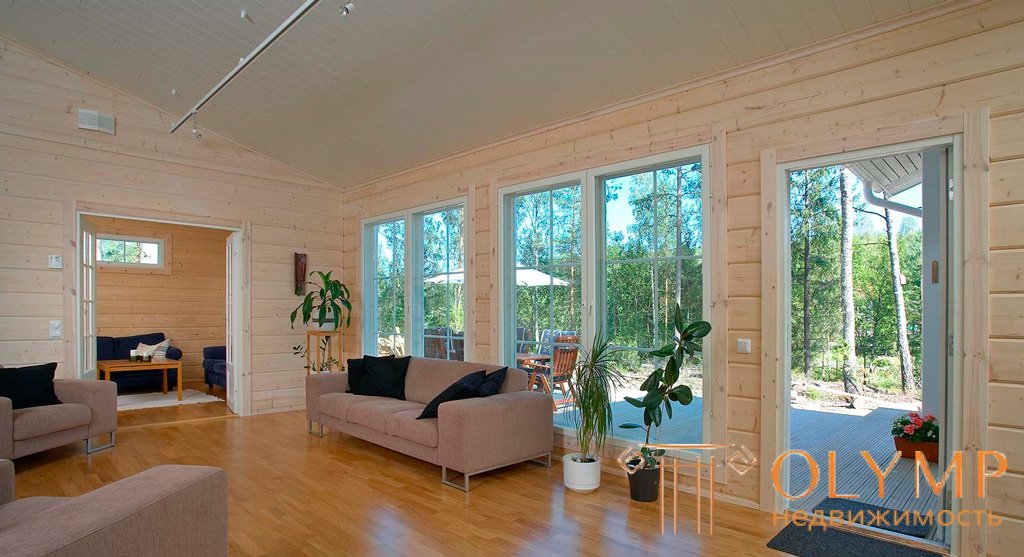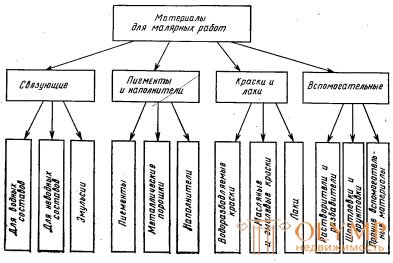
Depending on the purpose of the buildings, a category of painting works is established. There are three types of coloring in terms of quality: simple, improved and high quality. The difference between them is determined by how well the surface of the wall or ceiling is prepared for painting, as well as the quality of preparation and application of coloring compositions to the surface. The category of finishing is prescribed depending on the requirements for finishing. All coloring compositions are applied to the surface in a thin and even layer so that no trace of the brush is visible and the entire surface is painted evenly without smudges.
4.1. Color categories
Simple coloring is used in the finishing of the surfaces of auxiliary and temporary buildings, warehouses and other minor structures.
Improved color is used in the decoration of residential, public, educational and residential premises with a permanent stay of people.
High-quality paint is used in the decoration of theaters, clubs, train stations, palaces of culture and similar public buildings. The higher the requirements for the quality of the finishing of buildings, the more operations must be carried out when preparing surfaces for painting.
Coloring is divided into internal and external . The exterior requirements are more demanding in terms of the atmospheric and frost resistance of painted facades, enclosing structures of loggias and balconies.
The painted surface can be obtained smooth and rough, the latter is called "under shagreen leather" and is applicable when painting ceilings, walls of stairwells and building facades. Depending on the intensity of the gloss, the surfaces to be painted are subdivided into glossy and matte. When decorative and artistic surface finish walls can be painted on precious woods or expensive fabrics.
4.2. Surface coating with water formulations
Aqueous compositions include calcareous, adhesive, silicate and casein paints. Lime compounds are used for painting facades on plaster and stone, concrete surfaces, as well as plastered rooms with high humidity - for sanitary facilities and basements, but without permanent occupancy of people.
Water composition for painting ceilings called whitewash. The composition of whitewash includes sifted chalk (150 g), blue (6 g), joiner's glue (15 g) and water (5 l). The components of the materials are thoroughly mixed, in the resulting solution is injected with joiner's glue of liquid consistency. Blue (ultramarine) is necessary to give the coating the necessary whiteness (blue) and neutralize the yellowness emanating from the chalk.
Adhesive compositions have been used for internal stains on plastered or covered with sheets of dry plaster surfaces.
Silicate paint is applicable on plaster, concrete, brick and wood surfaces. Silicate compounds are a mixture of alkali-resistant mineral pigments and liquid potassium soluble glass with water; they have good flame retardant properties, they are little polluted and wash well with soap and water. In addition, silicate inorganic paints are designed for painting old surfaces on concrete, lime and lime-cement plaster, masonry of silicate bricks. It fits well on surfaces previously painted with lime, lime-cement, cement and silicate paint.
Lime-cement paint is prepared on a mixture of white cement and hydrated lime. It contains aggregate and pigments. The inorganic basis of binders allows the paint layer to pass moisture generated inside the building. It is designed not only for painting the interior and exterior surfaces of buildings, but also for protecting and painting new and old surfaces of clay brickwork and lime-cement plaster.
Casein paint is used for facades and internal dry plastered and brick surfaces. The color is similar to glue, but adhesion is higher, and the peelability is much lower than that of glue compositions.
Non-aqueous formulations include lacquer, enamel and oil formulations.
Paint - a suspension of finely ground pigment with a filler in linseed oil, varnish, emulsion, latex. Upon drying, evaporation of volatile components and formation of a film coating occurs. For construction non-aqueous paints include oil and enamel. Oil paints are produced with thickened (pasty) and liquid (ready to use). Enamel paints are prepared from pigments ground with various varnishes.
Varnish is a solution of a substance that, after the solvent evaporates, forms a transparent uniform coating on the surface. Varnishes give a decorative look to surfaces and at the same time form a durable protective coating. Most lacquers produced are colorless, but they also use lacquers with coloring pigments and black ones (based on petroleum bitumen and coal tar).
Enamel is a suspension of pigment in a lacquer, forming after drying in an opaque, hard, protective, decorative film with a certain texture. Enamels are divided into oil, alkyd, epoxy, etc. Epoxy enamels are most often used for painting metal surfaces.
4.4. Painting surfaces with synthetic compounds
Synthetic painting compositions are prepared on resins (perchlorovinyl, silicone, etc.). Shutters painted on them can be water and solvents.
Waterborne synthetic paints are used for interior decoration of buildings and structures, and paints on organic solvents are used for exterior decoration. Perchlorovinyl resin, dissolved in organic solvents with the addition of pigments and fillers, has found wide application in the production of outdoor finishing work in winter conditions.
Water dispersion paint is an aqueous solution of polymers, pigment, fillers based on chalk, kaolin, silica, talc and mica. To impart special properties to paints, emulsifiers, dispersants (grinders) and other chemicals are added to them. Unlike adhesives, water-dispersion paints are resistant to washing and rubbing them with water.
Polyvinyl acetate water dispersion paints are prepared on a polyvinyl acetate emulsion and a pigment with the addition of a stabilizer and plasticizers. The paints are intended for interior decoration of buildings but plaster, asbestos cement sheets, concrete, wood, plaster and plaster surfaces. For metal coating compositions can be applied after pre-priming the surface with an oil or lacquer composition. The quick drying of the paint is determined by the time of evaporation of water from it, which is approximately 40% in the paint.


Что бы оставить комментарий войдите
Комментарии (0)